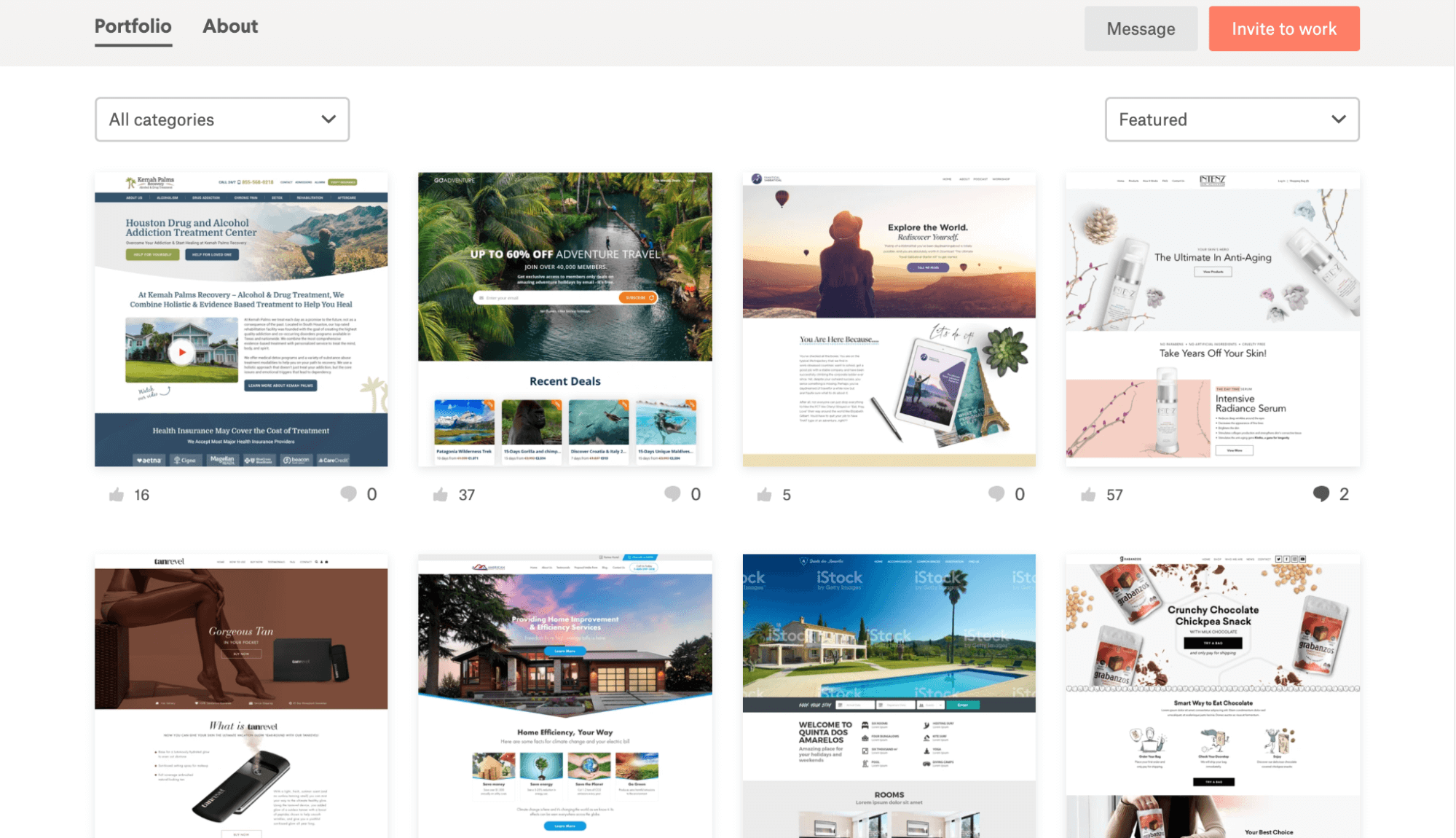Why Responsive Website Design is Essential for Modern Online Success
Why Responsive Website Design is Essential for Modern Online Success
Blog Article

Crafting a User-Friendly Experience: Vital Aspects of Efficient Internet Site Design
In the realm of site style, the relevance of crafting an easy to use experience can not be overemphasized. Important aspects such as a clear navigation framework, responsive layout concepts, and quick loading times serve as the foundation for engaging customers effectively. In addition, an instinctive interface combined with easily accessible material guidelines makes sure that all people, no matter capability, can navigate effortlessly. In spite of these fundamental concepts, lots of internet sites still fail in providing this smooth experience. Understanding the hidden aspects that add to efficient style can shed light on just how to improve customer satisfaction and involvement.
Clear Navigation Framework
A clear navigation structure is essential to efficient site design, as it straight influences user experience and engagement. Individuals must be able to locate info easily, as user-friendly navigating reduces disappointment and encourages expedition. A well-organized format permits site visitors to comprehend the connection in between different pages and web content, resulting in longer website visits and enhanced communication.
To achieve clearness, developers ought to use familiar patterns, such as top or side navigation bars, dropdown menus, and breadcrumb tracks. These aspects not just boost use but also offer a feeling of alignment within the site. Additionally, keeping a regular navigating framework throughout all pages is vital; this familiarity aids users prepare for where to locate preferred information.
It is additionally necessary to restrict the variety of menu items to avoid frustrating customers. Prioritizing the most important sections and utilizing clear labeling will certainly assist visitors successfully. Additionally, integrating search functionality can even more aid individuals in finding particular web content quickly (website design). In recap, a clear navigation structure is not merely a style selection; it is a strategic component that considerably affects the total success of a web site by promoting a effective and enjoyable user experience.
Responsive Layout Principles
Reliable site navigation establishes the phase for a seamless customer experience, which becomes much more essential in the context of responsive design concepts. Receptive design guarantees that web sites adjust fluidly to different display sizes and alignments, boosting availability throughout devices. This versatility is attained through flexible grid designs, scalable photos, and media questions that allow CSS to change styles based upon the tool's characteristics.
Secret concepts of receptive design include liquid layouts that use percents instead of repaired systems, ensuring that elements resize proportionately. Furthermore, using breakpoints in CSS enables the style to change efficiently in between various device sizes, enhancing the design for each and every display kind. The usage of responsive images is likewise essential; pictures must instantly adapt to fit the screen without losing high quality or triggering format shifts.
Additionally, touch-friendly user interfaces are important for mobile individuals, with sufficiently sized switches and intuitive motions enhancing customer interaction. By incorporating these concepts, developers can produce sites that not only look aesthetically pleasing yet likewise supply interesting and practical experiences across all tools. Inevitably, efficient responsive layout cultivates customer complete satisfaction, minimizes bounce prices, and urges longer interaction with the material.
Rapid Loading Times
While individuals increasingly anticipate sites to load quickly, quickly packing times are not just an issue of benefit; they are important for maintaining visitors and improving total customer experience. Research study suggests that users typically abandon internet sites that take longer than 3 seconds to tons. This abandonment can cause enhanced bounce prices and decreased conversions, eventually harming a brand name's credibility and profits.
Fast packing times boost individual involvement and satisfaction, as site visitors are more probable to discover a website that responds swiftly to their interactions. Furthermore, search engines like Google focus on speed in their ranking formulas, implying that a sluggish internet site may have a hard time to attain presence in search results page.

User-friendly Interface
Quick loading times prepared for an engaging online experience, yet they are just part of the formula. An instinctive customer interface (UI) is necessary to make sure visitors can navigate an internet site easily. A properly designed UI enables users to achieve their purposes with very little cognitive load, promoting a smooth communication look at here with the website.
Trick aspects of an user-friendly UI include regular design, clear navigating, and identifiable icons. Uniformity in style elements-- such as color design, typography, and switch styles-- aids individuals understand exactly how to communicate with the website. Clear navigating structures, consisting of rational food selections and breadcrumb tracks, make it possible for users to locate info promptly, minimizing stress and improving retention.
Additionally, responses systems, such as hover results and packing indicators, notify customers regarding their actions and the web site's response. This openness grows count on and urges continued interaction. Additionally, focusing on mobile responsiveness ensures that individuals delight in a natural experience across tools, satisfying the varied methods audiences access web content.
Accessible Material Standards

First, utilize straightforward and clear language, avoiding jargon that may puzzle viewers. Stress correct heading structures, which not only aid in navigation however additionally help display viewers in go right here analyzing content power structures properly. In addition, offer alternative text for images to share their meaning to customers who rely upon assistive modern technologies.
Comparison is an additional critical component; make certain that text stands apart against the history to enhance readability. Furthermore, guarantee that video and audio content consists of transcripts and subtitles, making multimedia available to those with hearing impairments.
Last but not least, integrate keyboard navigability into your layout, enabling users that can not make use of a mouse to access all website features (website design). By sticking to these available web content guidelines, internet designers can develop inclusive experiences that satisfy the requirements of all customers, eventually boosting individual involvement and fulfillment
Verdict
Finally, the combination of essential aspects such as a clear navigating framework, receptive design principles, quick filling times, an intuitive individual interface, and read the article available web content guidelines is crucial for producing a straightforward web site experience. These components jointly improve usability and engagement, making certain that users can effortlessly browse and interact with the site. Prioritizing these layout elements not just boosts total satisfaction but also promotes inclusivity, fitting varied individual needs and preferences in the electronic landscape.
A clear navigating framework is fundamental to effective website layout, as it straight affects user experience and engagement. In summary, a clear navigating framework is not simply a design selection; it is a strategic aspect that substantially impacts the general success of a site by fostering a efficient and enjoyable individual experience.
Moreover, touch-friendly user interfaces are critical for mobile customers, with effectively sized buttons and intuitive motions improving individual interaction.While users increasingly anticipate web sites to pack swiftly, quick packing times are not simply an issue of comfort; they are vital for maintaining visitors and enhancing overall individual experience. website design.In final thought, the integration of essential components such as a clear navigation framework, receptive design principles, fast loading times, an user-friendly individual interface, and obtainable web content standards is important for developing an easy to use website experience
Report this page